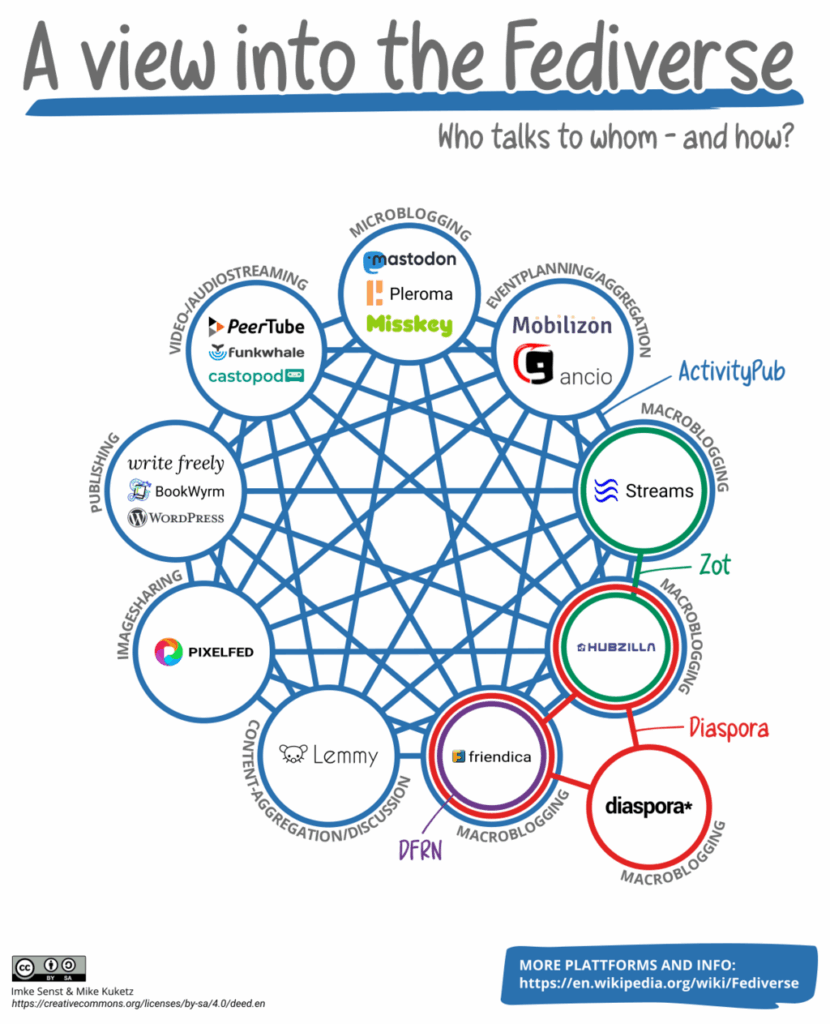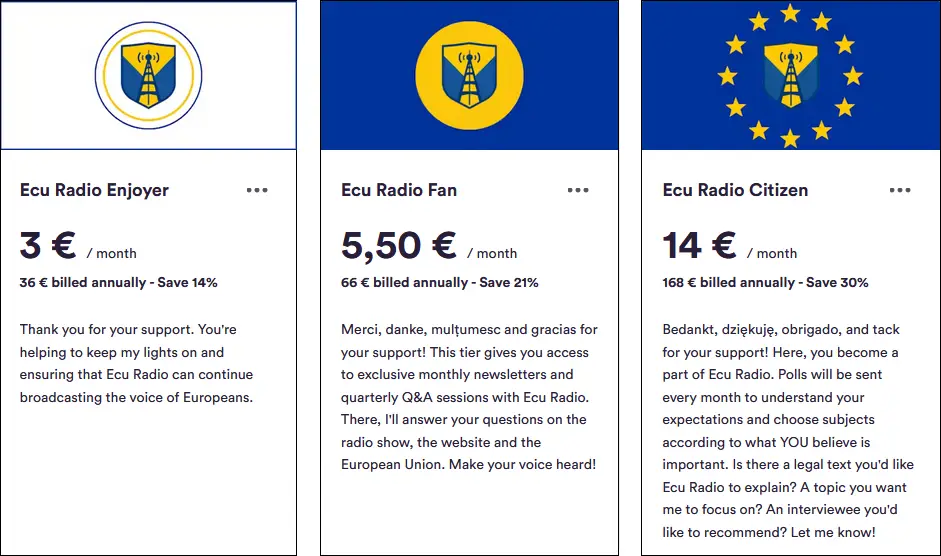It’s now been six weeks since I started writing those Buy European bulletins. And now, with Meta’s frankly infantile reaction to the fine issued by the European Commission over their breaching of the Digital Markets Act, the time has come to tackle their services directly. Today, we’re learning how to leave Meta, how to leave Facebook, how to leave Instagram, and ultimately, how to leave a toxic relationship that, for many, has brought nothing but misery and decay.

Leaving a Toxic Relationship is a Mindset
Before exploring European alternatives, however, let’s address the elephant in the room: How does one leave services that hold such a monopolistic position that all their counterparts pale in comparison? How does one abandon a platform that is so convenient and so interconnected that it feels irreplaceable?
Well, much like any toxic relationship, leaving is first and foremost about adopting and fully integrating a new mindset. Yes, it’s going to involve setbacks. Connecting with friends or family might become more challenging. The influencers and content creators you enjoy are unlikely to follow you in your decision. Events promoted solely through social media by businesses that rely on these platforms for communication will likely pass you by.
Yet, these sacrifices are easy to accept because leaving a toxic relationship is a winning move, regardless of the inconvenience:
- Your data will remain private.
- You’ll reclaim multiple hours of your day instead of endlessly scrolling through ads and hyper-focused engagement-bait.
- You won’t feed an algorithm that long ago devolved into a rage machine, driving users towards terrible content and ideas because drama generates clicks.
- You will stop being a prime target for bots that either populate your feed with AI-made influencers or attempt to redirect you to ransomware websites.
- You won’t give power to a company that consistently leverages your usage against your interests.
- You will show your contempt for a corporation that now gleefully engages in misinformation (but only in the United States, because such a move in the EU would be a direct violation of the Digital Services Act).
- You won’t further enrich a toxic CEO who calls EU laws “censorship“, wants less diversity at the office and calls his customers “dumb fucks“.
Besides, alternative ways to stay connected with friends, family, groups with shared interests, creators, and businesses are readily available. Between phones, emails, and instant messaging applications, we have more tools than ever to communicate and stay in touch. For groups based on shared interests, in particular, messaging apps provide excellent alternatives that won’t be riddled with ads and rage-inducing algorithms. But someone has to take the first step. So let’s dive in!
How to Leave Facebook
It starts with deleting your account. The following steps are courtesy of Facebook’s Help Centre:
9 Steps to Be Free from Facebook
- Click your profile picture in the top right of Facebook.
- Select Settings and privacy, then click Settings.
- Click Accounts Centre in the top left of your screen.
- Click Personal details, under Account settings.
- Click Account ownership and control.
- Click Deactivation or deletion.
- Choose the account or profile that you want to delete.
- Select Delete account.
- Click Continue then follow the instructions to confirm.
And you’re done!
Now, you can stop here if you so wish. As mentioned, there are multiple ways to stay in touch with family, friends or content creators. But if you love the macroblogging experience and happen to be an early adopter, let’s introduce Friendica, a free, open-source platform that is part of the Fediverse, a collection of decentralised networks that respects your data. We’re going to rely on several of their platforms to decouple from Meta.
Friendica (or the Fediverse in general) operates on a different logic than Facebook. No one-size-fits-all approach or single platform to connect to and create your account. You gotta choose a server (or community) to join. A bit overwhelming for beginners or even regular users, sure, but this decentralised model is the price to pay to avoid shareholder-driven degradation, ensure privacy, and offer a platform truly immune to enshittification, as there is no central hub to decide for you what you should see. If that sounds complicated, don’t worry, it’s easy to get used to it.
So, let’s review the steps:
- Connect to Friendica servers
- Choose the right server according to your needs and interests. You want a hassle-free experience? Then go with Friendica World. It’s the most popular, with 2000+ active users.
- Fill up the form and sign up. You’re now part of the Fediverse. Enjoy your stay!

How to Leave Instagram: Moving to Pixelfed
The title gives it away. But before we move forward, let’s perform the now-familiar action of deleting the current account.
5 Steps to Be Free from Instagram
- Click
More in the bottom left, then click
Settings.
- Click Accounts Centre, then click Personal details.
- Click Account ownership and control, then click Deactivation or deletion.
- Click the account that you’d like to permanently delete.
- Click Delete account, then click Continue.
And done!
Fortunately, leaving your Instagram account is made easy thanks to Pixelfed, a Fediverse network that boasts 722,000+ active users, plus your humble editor. To celebrate this sixth bulletin, I’ve created a Pixelfed profile, which you can access here. It will grow over time.
As per Friendica, here are the steps to get started.
- Connect to Pixelfed.org/servers.
- Choose the right server according to your needs and interests. Still want a hassle-free experience? Then go with pixelfed.social. With 450K+ users, it is by far the most popular.
- Fill up the form and sign up. Start sharing!
And should you appreciate the project or its approach, you can support it on Kickstarter. The developers behind Pixelfed need funding not only to grow their platform but also to offer alternatives to TikTok and WhatsApp.
And on that note:
How to Leave WhatsApp/Messenger: Now You Have Choices
Indeed. WhatsApp and Messenger have multiple, well-established competitors that offer a better chatting experience, ensuring your data is encrypted and thus private, while providing the same quality-of-life features you’ve come to expect, like notifications, image sharing, link sharing, and more.
Before reviewing alternatives, however, the main question arises: how do you convince people to move from WhatsApp or Messenger?
Well, you don’t necessarily need to move everyone immediately. Decoupling from Big Tech is a significant undertaking that should be done one step at a time, and that starts with you. Once you make the move, it’s typically not a major hurdle for your connections to install an extra app so they can chat with you. This is precisely how multiple alternative apps have gained traction, such as Signal, mostly known nowadays because the US Secretary of Defence prepared and shared war plans on it, in a gross display of incompetence.
And unlike other platforms, I won’t recommend that you delete your account right away. This can be a gradual process. Once you reach a critical mass of active connections using your app of choice, you can then simply delete the Meta apps from your phone.
Onwards to the recommendations. All apps listed here prioritise your privacy and security, offering end-to-end encryption for all chats (whether one-on-one or group) and video calls:
- Skred: Free and French, its servers are hosted in European data centers. Better yet, these servers don’t host any conversation content; your data stays on your phone.
- Threema: Hailing from Switzerland, it guarantees a high level of privacy and anonymity for a one-time fee of approximately €6. This charge is the explicit price you pay to avoid models that monetise your data.
- SimpleX: An open-source British app that focuses intensely on complete anonymity. Its main selling point is the fundamental design choice that there is no User ID for anyone.
- Signal: While US-based, Signal is free and arguably the most well-known and extensively audited app on this list. It has demonstrated its resilience and commitment to privacy several times.
Other options exist, but in my opinion, the list above offers some of the best services currently available for those prioritising privacy and value, featuring either completely free options or those with a simple one-time purchase and no recurring subscription fees.
How to Leave Threads... Wait, Why Were You On Threads in the First Place?
If you were trying to leave Twitter, joining Threads was truly an “out-of-the-frying-pan-and-into-the-fire” moment, especially considering there are much better-known, commonly used alternatives you could rely on to connect, discuss, and be entertained than Meta’s latest data-devouring machine.
So, onwards to the usual process.
3 Steps to Be Free from Threads
- Click
in the bottom left, then click Settings.
- Click Account, then click Deactivate or delete profile.
- Click Delete profile, then confirm your choice.
I appreciate how the process gets shorter as we proceed with deleting accounts.
Now, there are two primary alternatives you might consider if you need a short-message platform to stay in touch with your favourite content creators.
- Mastodon: Another member of the Fediverse! Using the same logic as Pixelfed, this European, fully decentralised social network respects both its users and their privacy. The most popular member of the Fediverse, it is now approaching two millions of active users (including Ecu Radio), and step-by-step, emerges as the place to be for those who want to express themselves freely and publicly, regardless of their locations. And getting started is easy. You know the tune at this point:
- Connect to the Mastodon servers.
- Choose the right server according to your needs and interests. Still want a hassle-free experience? Then go with mastodon.social. It is by far the most popular.
- Fill up the form and sign up. Easy as pie.
- BlueSky: Which I include here but only to warn against it. Currently one of the more popular alternatives to X/Twitter and Threads, it boasts over 30 million users. Celebrities like Stephen King and Mark Hamill publicly migrated, often citing Elon Musk’s behaviour on X, including his displayed interest in Nazi ideology, as their motivation. However, despite their communication, BlueSky is not truly decentralised in a way that genuinely empowers the user, like Mastodon does. Although the underlying protocol allows users to create and operate independent servers, this operation is too complex for the vast majority. Consequently, most users remain reliant on the main BlueSky infrastructure. This dependence means the platform retains significant centralised power, holding the liberty to restrict access or ban accounts, and thus remains highly susceptible to enshittification. This risk materialised recently when, due to pressure from the current Turkish government, they restricted access to 72 accounts Turkish citizens were using to organise protests and share their discontent. Add to that that’s it’s US-based and we got a bad mix that I cannot honestly recommend.
In Conclusion
Leaving Meta’s ecosystem might seem difficult. But that’s far to be the case. Like extracting yourself from a deeply entangled, unhealthy relationship however, it requires a change in mindset and an acceptance of potential short-term inconvenience. Yet, the long-term benefits are clear and substantial: regaining control over your personal data, reclaiming your time from endless scrolling, escaping the manipulative clutches of algorithms designed for addiction and division, and ceasing to support companies and individuals whose values actively work against your interests and well-being.
Moreover, we explored, viable, often European or open-source, alternatives. From image sharing on Pixelfed to secure messaging on Skred/Threema or micro-blogging on Mastodon, there is no obstacle to switching.
But taking this step is not just about switching apps; it’s a declaration of independence in the digital age, a move towards a healthier, more private, and more intentional online life. Start small, take it one app at a time, and know that by leaving…
You’re winning.
I’ll see you next week for another Buy European bulletin.
Ecu Radio needs your support
Ecu Radio is an independent news website and podcast show, run full-time by a single dedicated contributor (for now). Support our work, get exclusive perks and help keep us going, starting from only 3€ per month. Let's unleash Europe's potential together!
Click here to support Ecu Radio

